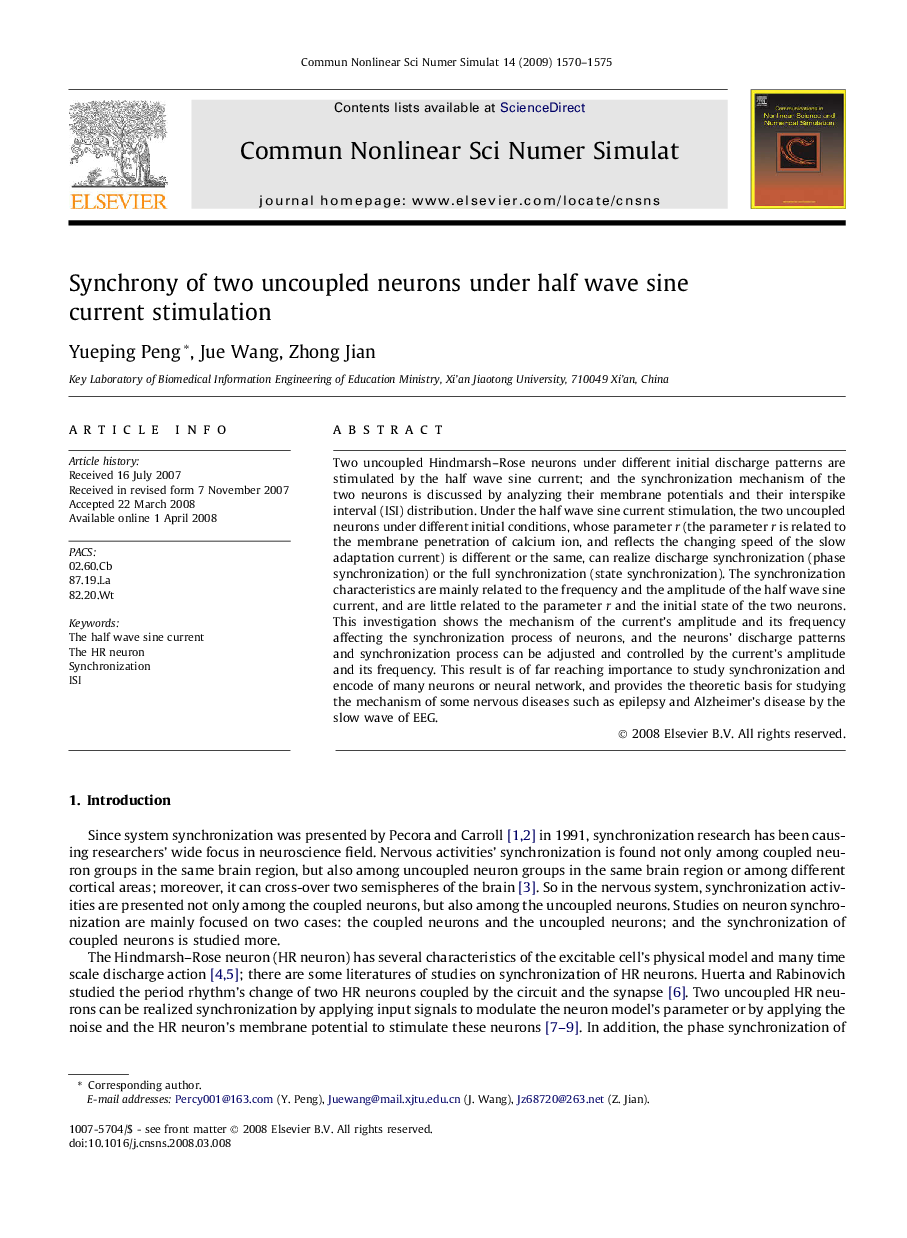| Article ID | Journal | Published Year | Pages | File Type |
|---|---|---|---|---|
| 760071 | Communications in Nonlinear Science and Numerical Simulation | 2009 | 6 Pages |
Two uncoupled Hindmarsh–Rose neurons under different initial discharge patterns are stimulated by the half wave sine current; and the synchronization mechanism of the two neurons is discussed by analyzing their membrane potentials and their interspike interval (ISI) distribution. Under the half wave sine current stimulation, the two uncoupled neurons under different initial conditions, whose parameter r (the parameter r is related to the membrane penetration of calcium ion, and reflects the changing speed of the slow adaptation current) is different or the same, can realize discharge synchronization (phase synchronization) or the full synchronization (state synchronization). The synchronization characteristics are mainly related to the frequency and the amplitude of the half wave sine current, and are little related to the parameter r and the initial state of the two neurons. This investigation shows the mechanism of the current’s amplitude and its frequency affecting the synchronization process of neurons, and the neurons’ discharge patterns and synchronization process can be adjusted and controlled by the current’s amplitude and its frequency. This result is of far reaching importance to study synchronization and encode of many neurons or neural network, and provides the theoretic basis for studying the mechanism of some nervous diseases such as epilepsy and Alzheimer’s disease by the slow wave of EEG.
